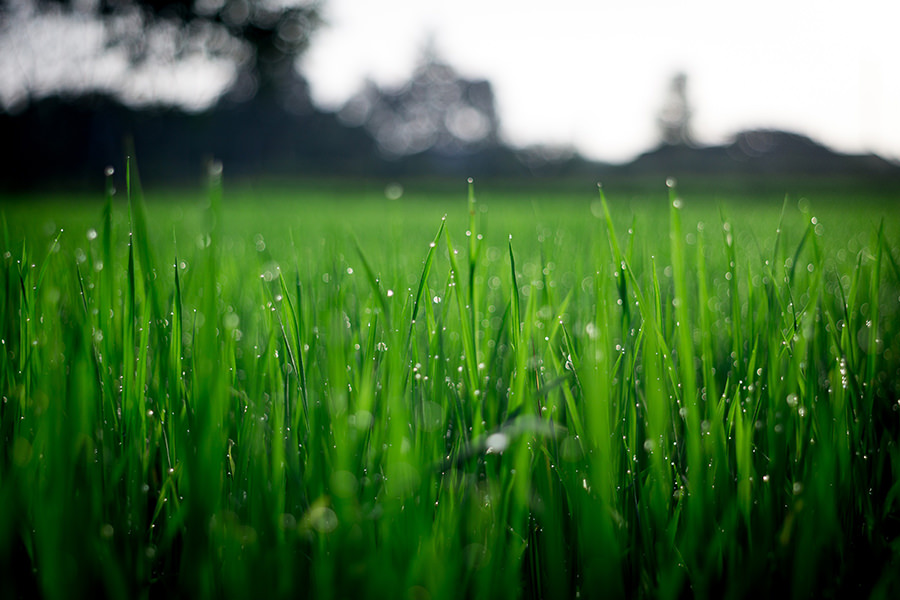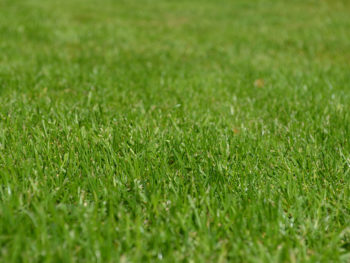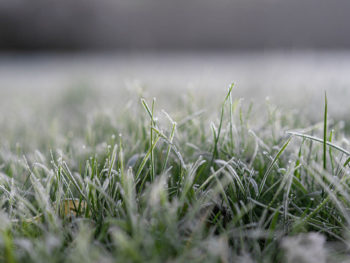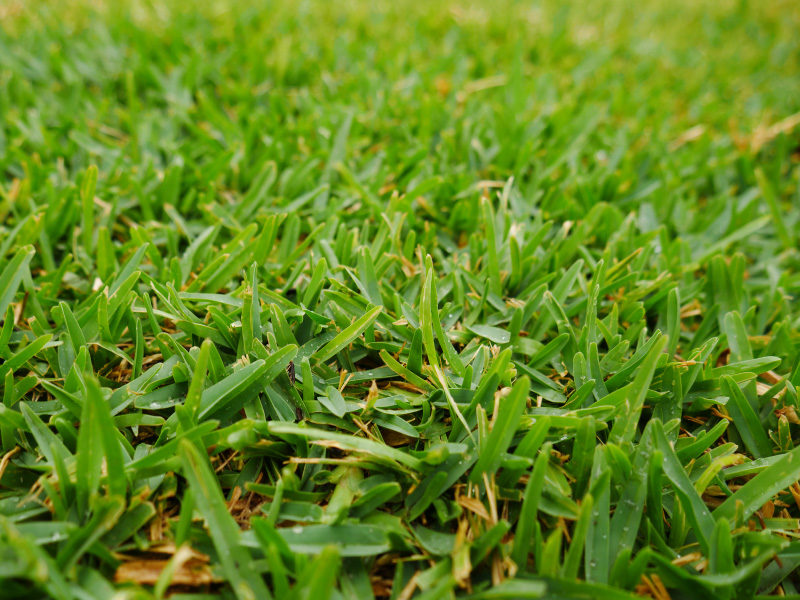Everybody wants a great-looking lawn that will stay that way over time – but many people find it hard to achieve this aim. It’s common to neglect your lawn at some time or other, but this can have huge negative impacts on how well your grass will last. However, with a little care and attention, you too can have a lawn that stays looking lush, green and healthy for many years. Here are some smart strategies to extend the longevity of your lawn, protecting your investment and allowing you to get a great deal of use out of your patch of green for years to come.
Water deeply but infrequently
Watering your lawn too often is done with the best of intentions – but it’s an all too common mistake. It’s natural to think that your grass needs water when it looks dry, but this is not the smart way to water your lawn. Overwatering and watering incorrectly will result in grass with a shallow root system that cannot tolerate dry conditions – and thus your grass will not last for long when it gets hot. A much better strategy is to water your lawn less often but for longer. This will encourage the grass to grow deeper roots and enable it to survive dry conditions much better, and it won’t become damaged and weak. This is a long-term strategy, not just to be carried out over summer. You need to train your lawn to become more drought-tolerant and develop that deep root system it needs to be able to reach that elusive moisture held in the lower levels of the soil.
Here’s how you do it. First, stop watering your lawn until it starts showing signs that it needs a drink. Signs of stress to look for include grass wilting, seeding or discolouring, which will tell you that your lawn needs water. Once your lawn has reached this stage, give it a good, long watering and allow the water to penetrate deep into the soil structure. Keep watering the grass this way, and it will develop deeper roots that can access water supplies from the deeper soil depths when necessary. Keep adjusting your watering times until you get the right balance, and your lawn will reward you with a lush, green display.
For more about how to create a more drought-tolerant lawn, click here.
Watering early in the day is best, when conditions are usually calm and still, and the sun is not yet hot. Watering in the heat of the day leads to too much water evaporating. Watering at night means that the water won’t absorb as quickly and will often just lie on the grass overnight, potentially causing fungus and diseases.
For more do’s and don’ts of watering your lawn, see this article.
Get your fertilising right
Fertilising your lawn can give you some of the biggest returns in terms of health, colour and longevity – so it’s surprising how few homeowners actually bother to fertilise. It might seem time-consuming and difficult, but it’s really not, and giving your lawn a regular feed will allow the grass to become stronger and greener, and resistant to drought, pests and weeds.
The best results come when you fertilise the lawn three times a year – the optimal times being early spring, early summer and mid-to-late autumn. At each of these stages, apply a slow release fertiliser that’s suitable for the time of year and your type of grass (contact Horsham Turf if you’d like help with this). If you carefully follow the instructions on the packet, you shouldn’t have any problems.
More is not better however, and it’s very important not to over-fertilise. Doing so will quickly cause your grass to lose colour and turn yellow, or even to completely die. Only give as much fertiliser as directed – that will be plenty to give your lawn all the benefits with none of the problems.
If you can only manage one application of fertiliser, choose to fertilise in late spring to early summer. This will give the lawn a good kick-start as it comes into the growing season and allow it to enter the cold months as strong and healthy as possible.
Mow at the right height and the right time
Yes, mowing can be a chore, but it’s also important in allowing water to reach the grass roots more easily and to prevent the build-up of thatch that can choke the lawn. Mowing regularly is a necessity in keeping your lawn in tip-top shape and ensuring it lasts for years.
It can be tempting to cut your grass very low, to avoid having to mow too often – but this is a counter-productive strategy. Cutting your lawn to the right height will allow it to grow vigorously and healthily and to outcompete weeds easily, meaning your lawn will be able to thrive and last for longer. Grass has an ideal cutting height for good health, and you should mow your grass when it reaches a height around 30% longer than its ideal height. Setting your lawnmower to the highest or lowest setting may not be what your grass needs. Mowing too low will often cause the grass to develop brown spots and patchiness, and to grow back faster, meaning you have to mow more often.
Avoid mowing during the hottest times of the day, as this can stress the grass. Minimise lawn stress by mowing in the morning or afternoon. Keep your lawnmower blades sharp so that they cut the grass effectively and don’t leave jagged edges.
Prevent weeds, pests and diseases from infiltrating your lawn
Any type of lawn, no matter how hardy, can be subject to attacks from pests, insects, weeds and diseases, which, if left untreated, will eventually take over and destroy your lawn. Act decisively once you spot an infestation, as prevention is much better than cure and it’s obviously much easier to treat a small infestation rather than a large one.
Your first step is to identify whatever pest or weed has popped up in your lawn, and then select and apply the right treatment to target the problem. Using the wrong approach can do more harm than good, so contact us for help in finding the right solution if necessary. If you only have a few weeds, you might be able to remove them by hand or spot treat them; however, if the weeds are growing actively, you’d be better off using a weed control treatment that won’t harm your grass (click here to access Horsham’s range of pest and weed control treatments).
For advice on how to control summer weeds, or to get rid of clover in your lawn, click here.
Let some air in
Excessive foot and vehicle traffic over long periods of time can leave your grass flattened and your lawn compacted, meaning it will be harder for grass roots as well as water to penetrate the soil. If you start noticing bare patches in the lawn and compacted soil that’s hard to dig down into, you’ll need to aerate the lawn – perhaps every few years or so. Use a lawn coring machine or a garden fork to agitate and break up the soil, allowing some air in, and your grass will reward you by growing healthy and strong again.
Let the sun shine where it’s needed
No matter whether your grass is sun or shade tolerant, every species of lawn grass needs direct sunlight to survive and thrive. Without enough sunlight, the grass will not be able to photosynthesise nutrients from the soil and will become weak and sick. So keep an eye on trees and bushes that overhang the lawn, and make sure they are not shading the lawn excessively. If this is happening, it’s time for a good pruning, to allow more sunlight to reach the lawn.
Remove leaves
Leaf falls in autumn can build up on the grass, smothering it during winter and suffocating the new growth in spring. This will leave unattractive dead spots all over your lawn, and you’ll have a job to do to repair and re-seed the lawn. A much better – and quicker – option is to remove all leaves from the lawn during autumn, leaving your lawn much healthier and happier throughout the winter months.
So there you have it – growing a lawn that will last and stay healthy throughout many years need not be difficult, expensive or time-consuming. Know your lawn in all seasons, and pay attention to what’s happening so that you can act quickly when signs of stress or problems start to appear. Follow these few simple steps and you’ll be able to enjoy an attractive, healthy and usable lawn for many years to come.





 How to control summer weeds
How to control summer weeds
